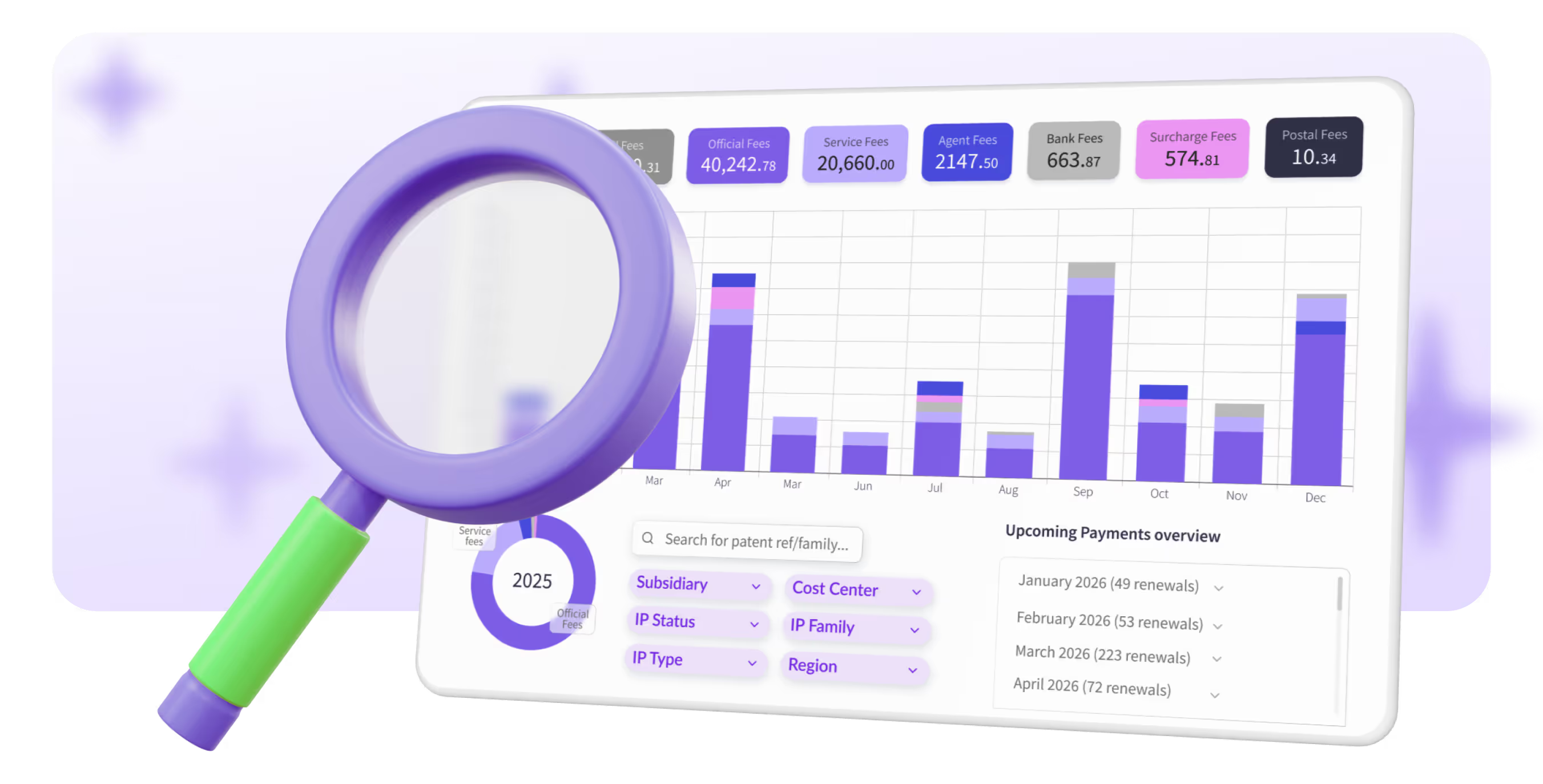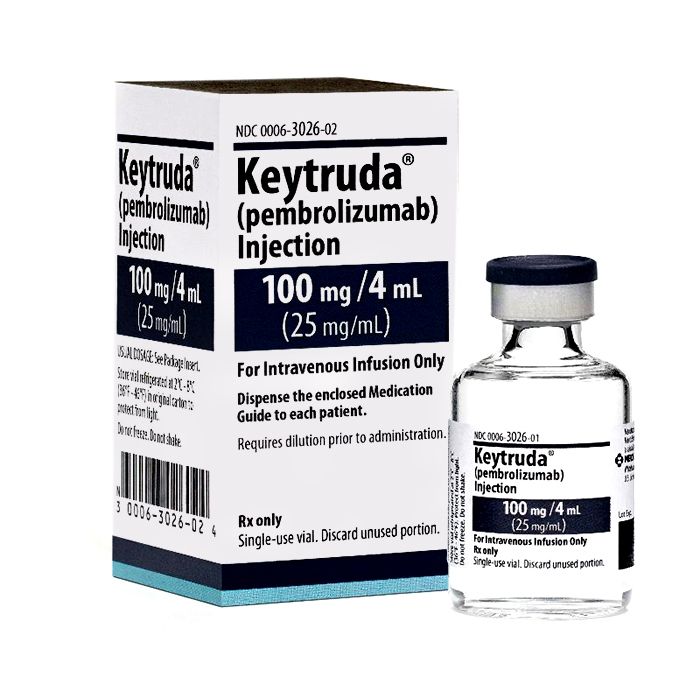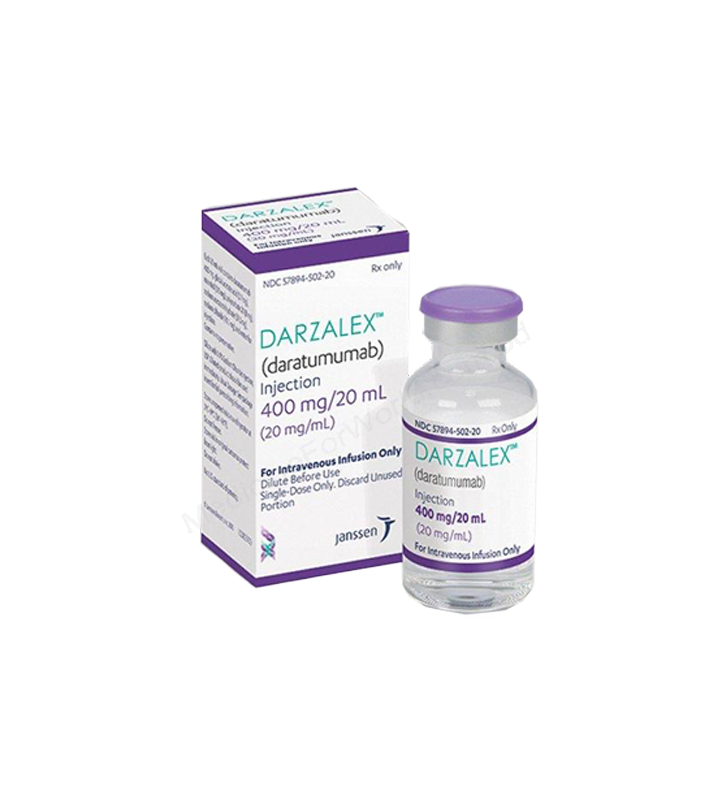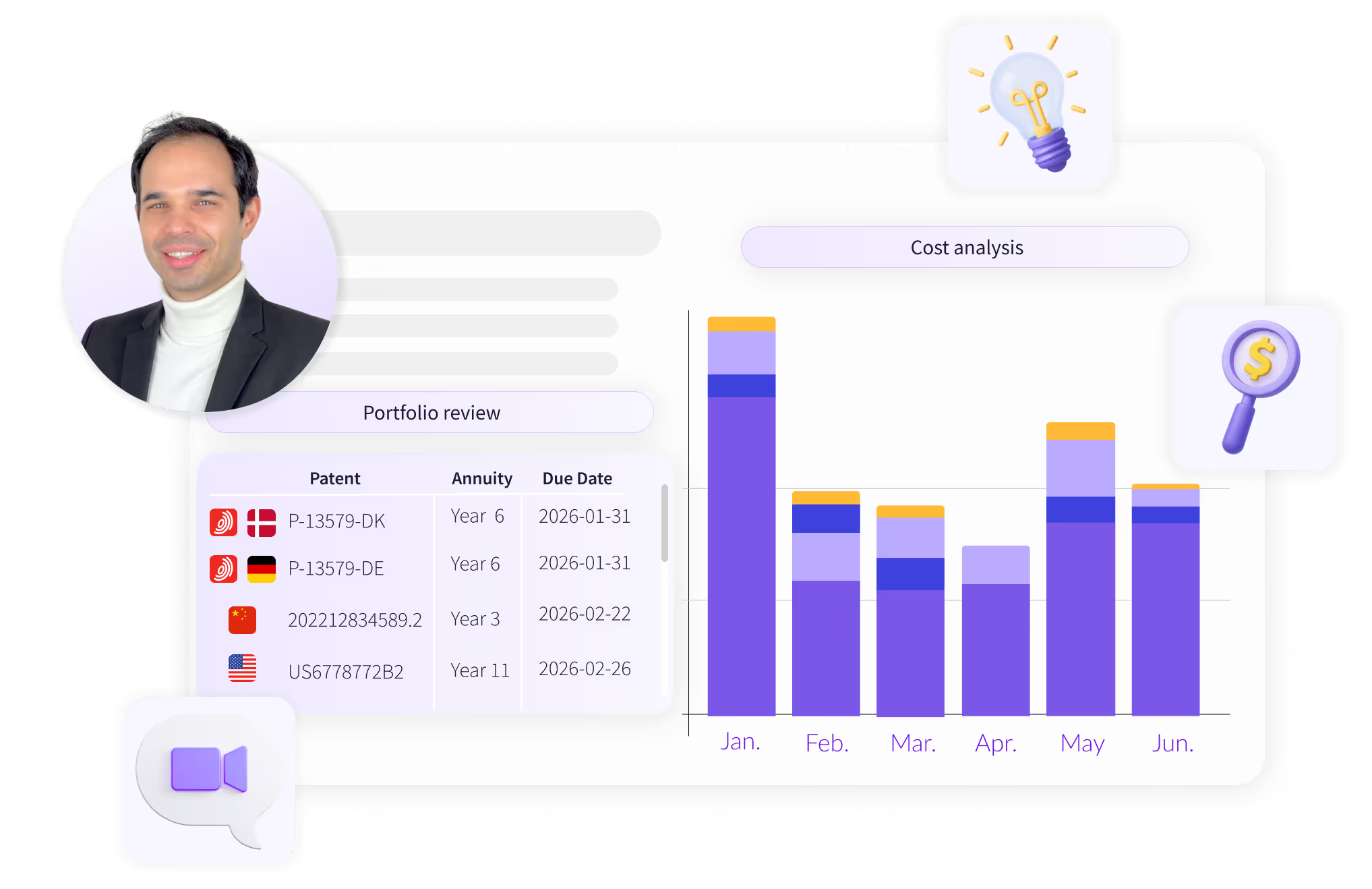TRY OUR NEW (FREE) IP RENEWAL COST CALCULATOR
Calculate
.avif)
The expiration date of patents has the potential to significantly impact the market in today's world of innovation. From pharmaceuticals to technology, no industry is immune to this challenge.
This blog post dives into patent cliffs, exploring their implications and focusing on how companies, particularly in the pharma sector, are bracing for these challenges in 2024.
Patent cliff is a term used across industries, referring to the sudden and significant drop in revenue when a patent expires. Patents provide inventors with exclusive rights to their innovations, typically for 20 years, but when the patent term ends, competing companies are free to produce similar or generic versions of the product, often leading to a sharp decline in the original product's market share and profitability.
While the pharmaceutical industry faces some of the most pronounced effects of patent cliffs, other sectors like technology, biotech, and manufacturing also grapple with these challenges. For instance, tech companies heavily invested in unique software or devices can face rapid competition as soon as a patent expires, with rival brands offering cheaper or improved alternatives.
As a result, businesses across sectors must navigate patent cliffs to maintain revenue streams and competitive positioning, either by innovating new products or finding ways to extend the commercial life of existing ones.
In 2024, several leading pharmaceutical companies face a patent cliff, as some of their top-selling drugs are set to lose patent protection. Blockbuster medications from Merck, Bristol-Myers Squibb, and Johnson & Johnson are among those at risk.
The challenge isn't just the loss of exclusivity; it's also the subsequent market impact when generics quickly move in. According to recent data, more than $200 billion in annual revenue is at risk through 2030, facing an even larger patent cliff. With such high stakes, the pressure on these companies to innovate either through new drug development or strategic acquisitions has never been greater.
Let’s dive deeper into some real-world cases. Merck is facing a significant patent cliff with its cancer drug Keytruda, which brought in more than $17 billion in 2022, making it one of the best-selling drugs globally. The loss of exclusivity for Keytruda is expected to be a substantial hit, potentially reducing Merck’s annual revenue by billions. To counter this, Merck is proactively investing in new therapies and acquisitions, aiming to bring fresh revenue streams before the patent cliff hits.

Bristol-Myers Squibb is facing a similar challenge, as their blood thinner Eliquis—co-developed with Pfizer—is approaching the end of its patent life. In preparation, Bristol-Myers Squibb has been ramping up its research and development pipeline and actively pursuing new patents to maintain a strong portfolio.

Johnson & Johnson, on the other hand, is bracing for the patent cliff of its cancer drug, Darzalex. To offset potential revenue losses, J&J has been diversifying its portfolio through both internal development and strategic mergers and acquisitions, with an eye on long-term growth.

One common strategy to offset revenue losses from patent cliffs is through mergers and acquisitions (M&A). When companies are approaching a patent cliff, acquiring other businesses with promising drug candidates or existing products allows them to quickly diversify their portfolios and strengthen their pipeline.
For instance, Bristol-Myers Squibb acquired Celgene for $74 billion in 2019, largely to bolster its drug lineup in anticipation of upcoming patent cliffs. Such large-scale acquisitions provide companies with an immediate boost to their product lines and a cushion against revenue drops. M&A activity is expected to increase in 2024 as more pharmaceutical giants seek to maintain their competitive edge amidst expiring patents.
According to a report by Fierce Pharma, M&A activity is likely to be driven by the need to shore up portfolios in light of patent cliffs, with a focus on acquiring small- and medium-sized biotech companies with potential blockbuster drugs. This strategic focus allows pharma giants to maintain steady growth and retain market share even as key patents expire.
Pharma companies are not only focusing on new acquisitions but are also embracing advanced research and development to discover new drugs or improve existing ones. Innovating faster than competitors can enable these companies to maintain a competitive advantage even when a patent expires. Additionally, transitioning patients from an expiring drug to a newly patented one can retain market share and sustain profitability.
For example, AstraZeneca, anticipating the patent cliff for some of its drugs, has developed next-generation therapies and invested in groundbreaking research in oncology and cardiovascular disease. By focusing on these innovative areas, they aim to offset losses from patent expirations and sustain long-term profitability.
There are also instances where companies strategically decide to let certain patents lapse. This can happen for various reasons, when the costs of maintaining the patent exceed its commercial value, when the product no longer aligns with the company’s core strategy, or when newer, more advanced treatments have replaced the drug.
The decision to let a patent lapse often depends on market size, the regulatory environment, and competitive dynamics in specific countries.
Pharma companies often maintain patents in countries with strong IP enforcement, like the US, Canada, Japan, and the EU, to protect their market share. In contrast, they may allow patents to lapse in regions with weaker enforcement, such as India and Brazil, where generics can easily replicate drugs and enforcing rights is challenging.
This approach allows companies to maximize the value of their IP portfolio while minimizing unnecessary costs in markets where the returns on maintaining a patent are low.
One strategy that pharmaceutical companies employ to mitigate the impact of patent cliffs is managing their patent maintenance more effectively. Extending the life of a patent through supplementary protection certificates (SPCs) or by filing new patents on variations of the drug, such as new formulations, delivery methods, or combination therapies, are common approaches.
However, these tactics are not foolproof, and they require substantial investment and careful planning. A well-managed patent strategy not only helps extend the commercial life of a product but also provides a buffer period to develop new revenue streams.
The role of patent maintenance is crucial since missing regular payments or mismanaging IP renewal schedules can result in the patent lapsing before its time, which can prematurely expose the patent holder to competition.
Given the global nature of the pharmaceutical industry, managing patent maintenance across different jurisdictions is often complex and time-consuming. Each country has its own rules, fees, and timelines for patent annuities, requiring careful coordination to ensure patents are properly maintained without lapses.
Mismanagement can be costly—both financially and strategically. Keeping track of these details manually can lead to costly errors, missed deadlines, or unnecessary fees, all of which can put your valuable IP at risk.
This is where automated IP renewal platforms like PatentRenewal.com come into play. Our platform helps companies streamline the patent maintenance process, and significantly reduce costs associated with managing patent annuities.
From automated reminders and country-specific regulations to cost-optimization strategies, we help you stay on top of renewal schedules effortlessly, so you never miss a payment or opportunity to protect your IP.
Find out more about our automated IP renewals, discover how PatentRenewal.com can simplify your IP management and help you stay ahead in the competitive world of patents. Learn more and get started today.
Interested in a free IP renewal consultation? Benchmark your current IP renewal setup and costs against market standards.
